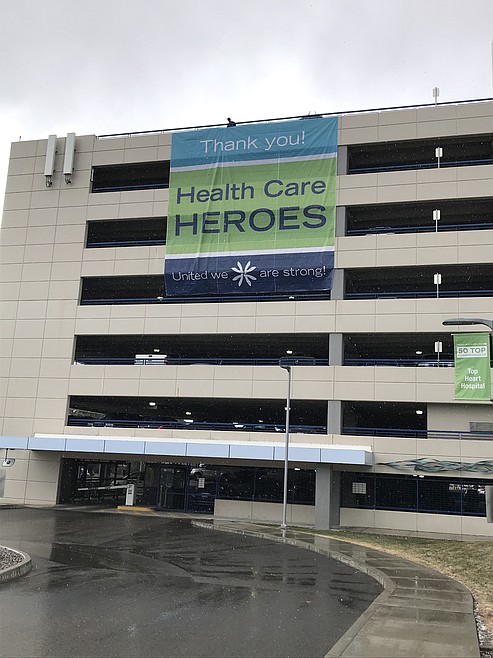Series focuses on coronavirus impact
MIKE PATRICK | Hagadone News Network | UPDATED 4 years, 6 months AGO
Imagine a storm is coming.
Not a storm — a STORM.
Widespread destruction is predicted. Survival is anything but assured. All the preparation you can muster might not save you.
But you invest heavily in bracing your home for what lies ahead. And you wait. You invest some more. You prepare. And you wait some more.
While the money is going out, almost none is coming in.
The storm, as you already know, spares you. Yet it’s devastating even in its absence. Here you are and your house is whole, but your bank account is depleted and life-sustaining cash is trickling in like a dripping faucet when what you need is a fire hose of help.
This is the story of community hospitals in America.
According to research compiled by communications and marketing director Kim Anderson and staff at Kootenai Health, the outlook for many community hospitals was shaky even before the take-shelter sirens started screaming.
Nationally, 453 — or one in four — of all rural hospitals are now at risk of closure, Anderson’s research shows. Almost 60 percent of all Washington community health centers could be forced to shutter by September, thanks to the potentially lethal financial effects from COVID-19. Five full-fledged Washington hospitals — three in the eastern part of the state — have also been identified as extremely vulnerable to closure.
If you look at hospitals as businesses, national numbers like these can make you ill:
• Occupancy down 12% year over year
• Discharges down 11% year over year
• Emergency Department visits down 17% year over year
• Operating room minutes down 19% year over year
• Adjusted patient days are down 15%
The American Hospital Association is projecting a total four-month financial impact of $202.6 billion in losses across American hospitals and health systems. Mayo Clinic, considered by many the gold standard in modern health care delivery, is predicting a $3 billion revenue loss even after pay cuts and furloughs.
Federal stimulus funds have slowed the bleeding, but not stopped it. If major help is on the horizon, it’s not from an easily identified source. High unemployment rates are expected to further squeeze hospitals’ revenue streams:
• 18 million adults are expected to lose employer-sponsored insurance
• 8 million adults are expected to enter Medicaid
• 7 million adults will become uninsured
Community-owned Kootenai Health is far from immune to what ails not just the health care industry, but almost every industry. On Sunday, The Press will check in with Kootenai Health leaders about how coronavirus has impacted staff, patients and the community. On Monday, we’ll present a glimpse at the future for our hospital — one that offers hope built upon a plan.

